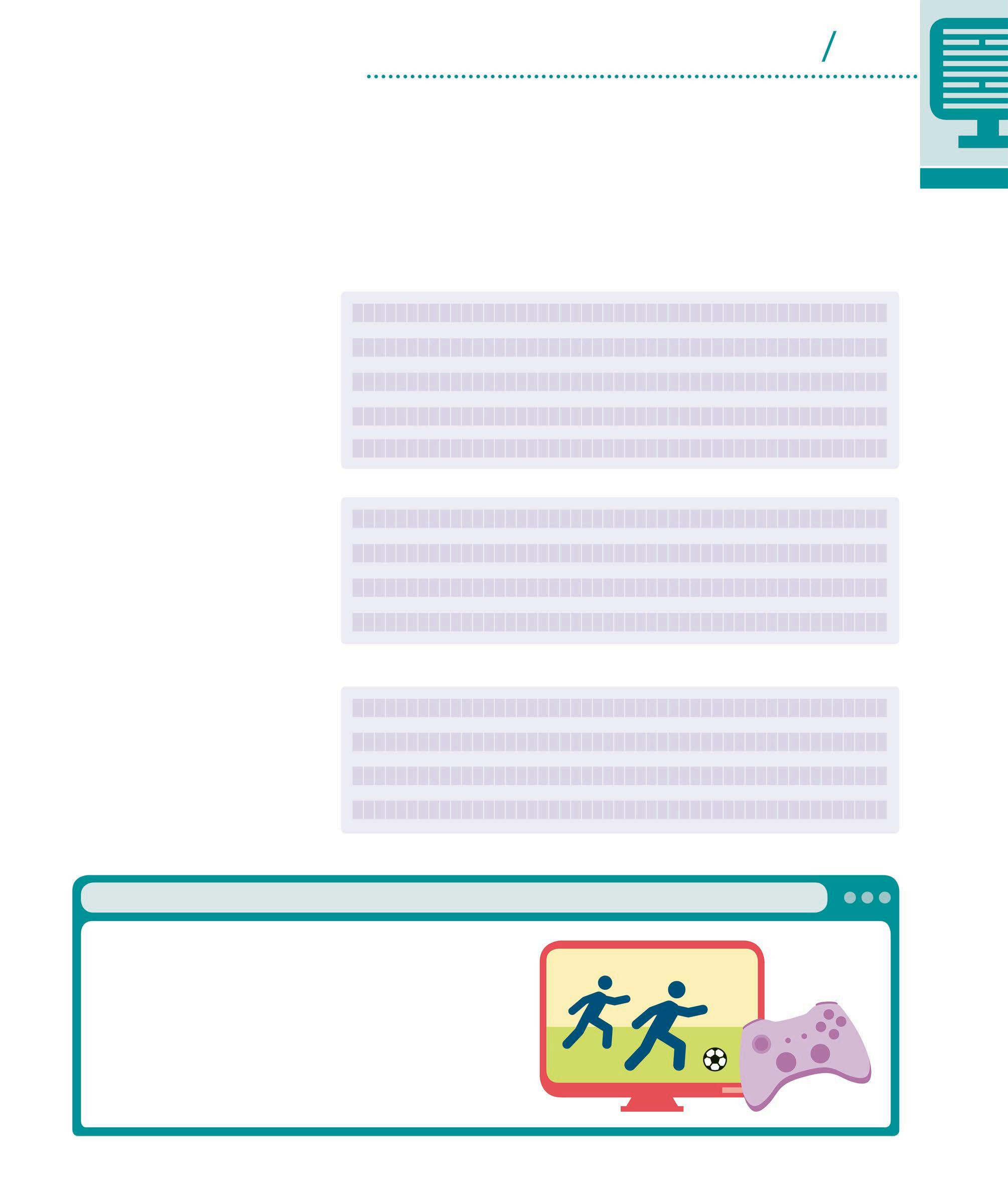
3 minute read
Libraries
A Python library is a collection of files, known as modules, that are available for other programmers to use. These modules contain code for common programming tasks, ranging from interacting with hardware to accessing web pages.
Built-in modules
Advertisement
The library that comes with every installation of Python is called the Python Standard Library. It contains modules, such as Tkinter and turtle, which are available without the need to download or install any additional code.
turtle
This Python module recreates the turtle-shaped robot from the programming language Logo. The robot draws on the screen as it moves around.
random
This module enables programs to include calculations or outputs based on random numbers. This can be useful when a programmer wants to create an element of chance.
socket
The socket module allows programs to communicate across networks and the Internet. This module allows programs to create their own sockets.
datetime
The datetime module allows a program to work with calendar dates and functions that can calculate the time between dates.
time
The functions in this module deal with time, such as those relating to time measured by the computer’s processor and time zones for different countries.
webbrowser
The webbrowser module allows a Python program to open a browser on the user’s computer and display links.
Tkinter
The Tkinter module allows programmers to create a graphical user interface (GUI) for their code, including elements such as buttons and menus.
Importing and using modules
The process of adding a module to a program so that its functions and definitions can be used is called “importing”. In Python, it is possible to import either an entire module or just certain functions of a module. The method used for carrying out the import depends on the requirement of the program. The examples below illustrate the different methods for importing and the required syntax in each case.
import ...
The keyword import followed by the module’s name makes all of the module’s code available to the program. To access the module’s functions, it is necessary to type the imported module’s name followed by a dot before the function name in order to call that function.
import time
offset = time.timezone
print("Your offset in hours from \ UTC time is: ", offset)
Calls the timezone function of the time module
Prints the value in the variable offset
from … import …
If a program only needs to use one or two functions from a module it is considered better just to import these, and not the whole module. When functions are imported in this way it is not necessary to include the name of the module before the function name.
from random import randint

dice_roll = randint(1,6) print("You threw a", dice_roll)
The randint() function produces a random integer between 1 and 6
from … import … as …
If the name of a function in the module is too long or is similar to other names in the code it can be useful to rename it. Just as in “from ... import ...”, this allows the programmer to refer to the function simply by its new name, without preceding it with the name of the module.
from webbrowser import open as show_me
url = input("enter a URL: ") show_me(url)
Displays the user's choice of web page
PYGAME
The pygame library contains a huge number of useful modules for coding games. Since pygame is not part of the Standard Library, programmers have to download and install it before they can import it to their code. pygame is very powerful, but can be challenging for new programmers. One solution to this is the Pygame Zero tool (see pp.176–77), which makes the functions in pygame easier to use.










